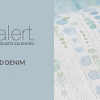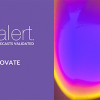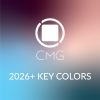Color Design and Your Bottom Line

Color is about much more than eye-catching hues: it’s a method of communication.
Whether we want to admit it or not, color affects our perception of reality. Color is a powerful communicator, and it influences nearly every aspect of our lives.
For this reason, it’s critical to use smart color design when manufacturing commercial goods or products. After all, it would be a pretty bland world if we didn’t have color. When designers and manufacturers design with a color-first approach, you’ll quickly see the results.
It takes customers mere seconds to decide if they want to buy from you. Ninety seconds, to be exact. You have a narrow window during this time to make a connection with your customer. No matter how great your product is, much of a customer’s decision is made based on color.
Don’t design a product or packaging without smart color design. Learn how to leverage color to better appeal to customers while increasing your bottom line.
What is color design?
Color creates meaning for customers through certain colors or color combinations. Color design facilitates the process of using the right colors for the right customer. Brands can use principles of color design to encourage certain attitudes and behaviors in their customers – and that translates to more product sales.
Every color and color combination evokes a certain mood. For example, blue evokes trust and calm, which is why banks and airlines tend to use these colors. On the flip side, warm colors like red and yellow evoke a sense of excitement and urgency. Fast food giant McDonald’s famously uses yellow and red packaging to build excitement and whet customers’ appetites.
Designers from all verticals can benefit from the power of color design.
If you’re in the business of manufacturing over-the-counter medicines, take a stab at using color design in your products. Although manufacturers usually color coordinate daytime medicine as orange and nighttime medicine as purple or green, research shows this approach isn’t the best strategy to boost sales.
Did you know that customers are more likely to rate orange, yellow, or red pills as more effective than blue or purple pills? This is true even when customers are given placebo pills! Forget the daytime and nighttime color patterns: warmer colors are where it’s at for this niche.
If color design can convince a sick person that a placebo pill makes them feel better, imagine what else it can do. Thrill customers with the right color combo for maximum persuasion.
Color design in action
The crazy thing about color design is that it builds your identity. You could have a can of Coca-Cola and know the brand, even if the name wasn’t on the can. And we bet you’d still want some of that sweet, syrupy soda, too.
Color establishes identity, which is why companies pay so much attention to color choice while branding. But color design isn’t something to cast aside once you’ve established your brand. Au contraire: consistently applied color mobilizes customers time and time again, which means more product flying off the shelves at a record pace.
Design is about making deliberate choices. Although color needs to be a top concern while building your product, it’s not the only concern. Follow these quick tips while designing product or packaging to get the most out of your smart color design strategy.
Tips for showing your colors
- Know your brand values
The first rule of good design is staying true to your company’s story and persona. This goes for both your color choices and your packaging. For example, a lot of eco-friendly brands use green and blue on their packaging. They might also use Earth-friendly packaging materials like recycled paper.
- Know your customer
If your target customer is a busy mom, is she going to bother with busy packaging? Nope! She’s going for the minimalist, color constant, easy-to-read product that jumps out at her from the shelf.
Culture, age, gender, and economic status play significant roles in how your customers perceive color. Know their lives inside and out so you can design the best targeted color strategies.
- Make color your disruptor
Although there are rules for color use in design, some rules were meant to be broken. Think about it: if you’re a customer looking for a new organic shampoo, it’s hard to differentiate one product from another when they’re all green.
Sometimes it’s okay to step outside the box! Sure, there’s a reason your competitors use navy blue for everything they do, but it doesn’t mean you have to follow their lead. In fact, you can take advantage of your competitors’ choices and do something out of character for your niche, like red and black packaging for an eco-friendly brand.
If you do choose an off-kilter color choice, make sure you can justify it by going back to your brand’s values.
- Shelf life
We’re not talking about your product’s use-by date. We’re talking about how long it sits on the shelf before a customer picks it up. Color is the one thing that engages and communicates with customers while they shop. Even if they’re loyal to a certain brand, they look for telltale packaging colors before they read a word. Color is the one thing that makes sure your product leaps off shelves and sells like hotcakes.
- Testing
If you’re unsure about your color choices, there’s a simple way to make sure you’ve got it right: testing. No matter your industry, you can benefit from putting prototypes in front of focus groups. Narrow it down to two or three color choices and let your testers democratically choose what works best for them.
Get their honest opinions and take the feedback to heart. It could be the difference between a product that flops and a product that flies.
The bottom line
Product features and packaging are exciting to think about, but color design plays a significant role in customer response. Communicate the unique value you bring to the table through the smart use of color in both your product and brand story. Color very well could be the most powerful way to boost your bottom line.









[…] Color Design & Your Bottom Line What is Color Forecasting? […]
[…] Color Design and Your Bottom Line […]